'The Dick Van Dyke Show' — Secrets Revealed
- Oops!Something went wrong.Please try again later.
- Oops!Something went wrong.Please try again later.
- Oops!Something went wrong.Please try again later.
- Oops!Something went wrong.Please try again later.
- Oops!Something went wrong.Please try again later.
- Oops!Something went wrong.Please try again later.
- Oops!Something went wrong.Please try again later.
- Oops!Something went wrong.Please try again later.
- Oops!Something went wrong.Please try again later.
The success of a television sitcom can usually be traced back to the ensemble of actors brought together to bring its characters to life, and The Dick Van Dyke Show was one of the best. Airing on CBS from 1961 to 1966 for a total of 158 episodes over five seasons, it cast Van Dyke — who had starred in Bye Bye Birdie on stage and in film — as Rob Petrie, head writer for the fictional The Alan Brady Show; Mary Tyler Moore as his wife, Laura; Rose Marie and Morey Amsterdam as staff writers Sally Rogers and Buddy Sorrell, Richard Deacon in the recurring role of producer Mel Cooley, and comedy legend Carl Reiner (who also created the show) as Brady.
From out of the gate, the writers of The Dick Van Dyke Show were determined to have television viewers get to know these characters and care about them. Pop culture historian Geoffrey Mark, who is also the author of The Lucy Book and Ella: A Biography of the Legendary Ella Fitzgerald, and was friends with most of the cast of The Dick Van Dyke Show, comments, “My buddy Carl Reiner was an amazing crafter of writing. Carl, like the original writers of I Love Lucy, understood that if we’re going to love these people or have them in our homes every week, we have to know who they are. So, brilliantly, he spent about half the first season delving into who these people were, where they came from and how they met.
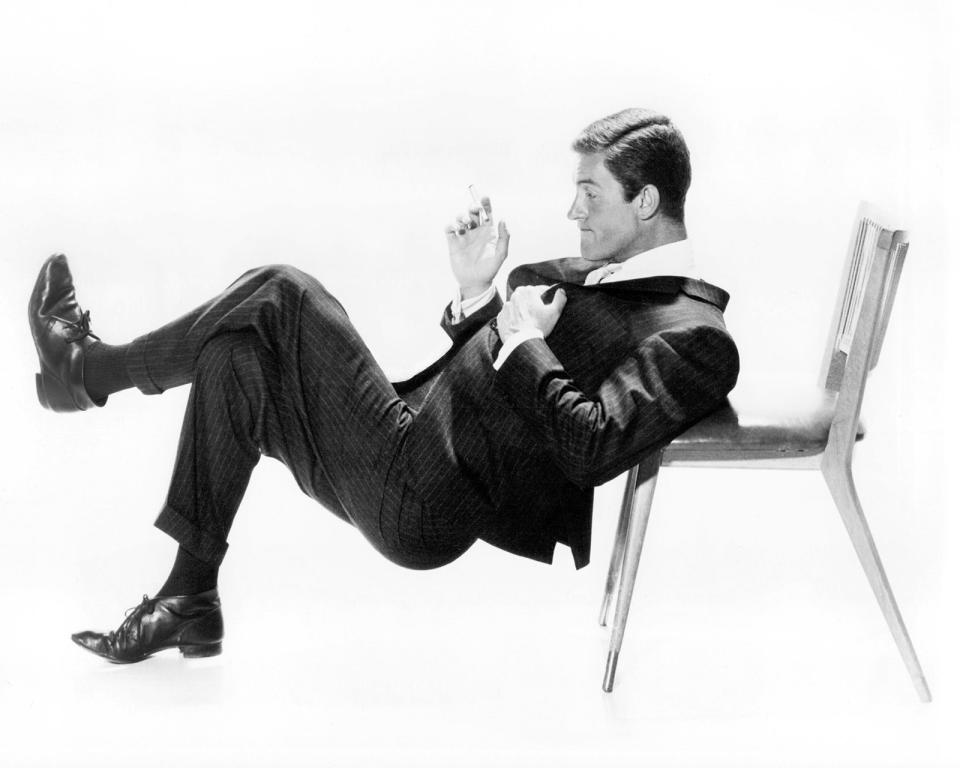
“The Dick Van Dyke Show endures,” Geoffrey, adds, “also because it was filmed in front of a live audience at Desilu in the same manner that I Love Lucy was. So we get the same feeling of spontaneity and being in the audience with the audience that is watching things unfold and laughing. It was definitely not one of those shows that had a laugh track.”
The Show Was Originally ‘Head of the Family’ and Starred Carl Reiner
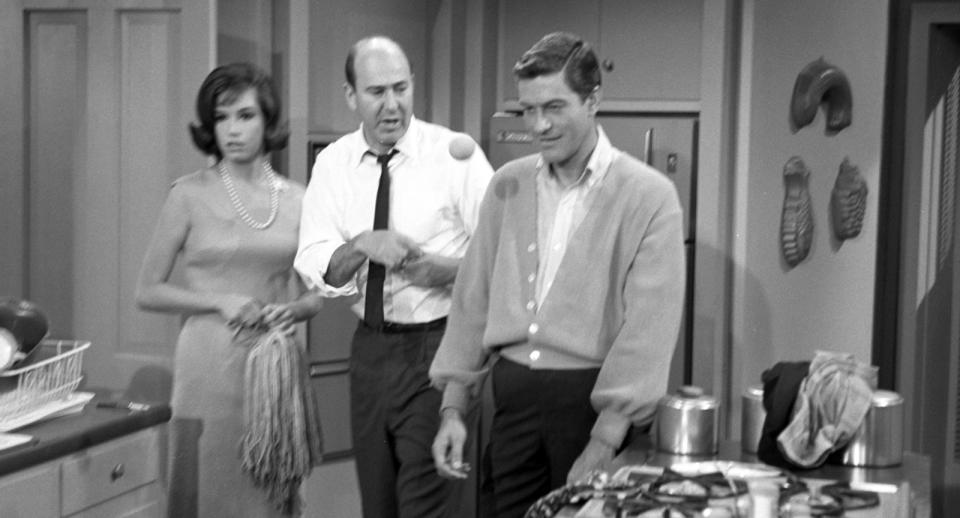
As originally conceived, The Dick Van Dyke Show was called Head of the Family and starred Reiner in the lead role. "The set-up was similar," says Geoffrey, "but Carl could not get anyone to sponsor the show back when you had one sponsor for a half-hour show. Nobody wanted it. That's where Sheldon Leonard comes in; his is a name that's also really important to this show."
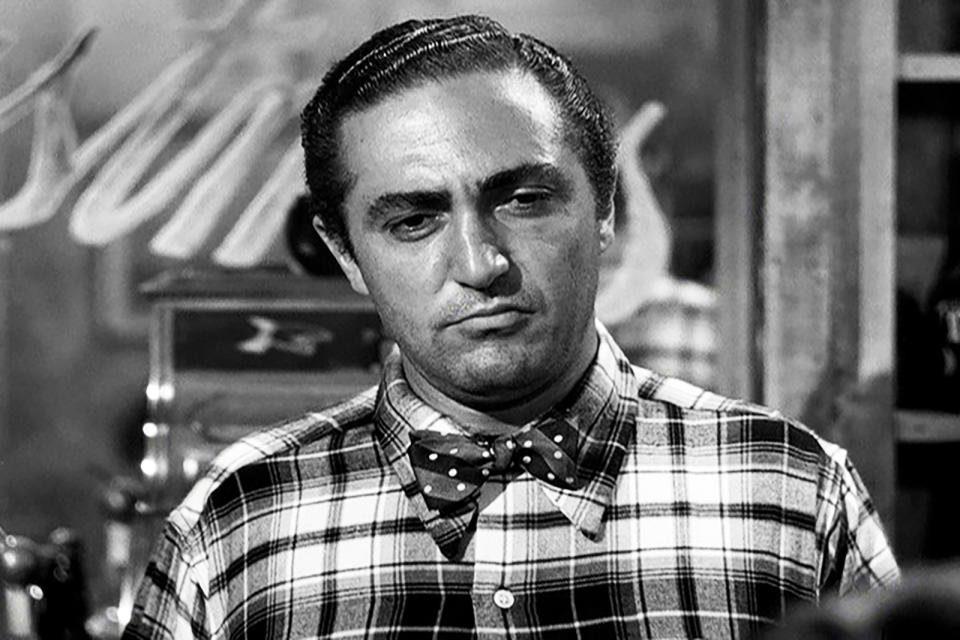
Today's TV viewer hears Sheldon Leonard, and they likely think of Sheldon Cooper and Leonard Hofstadter from the sitcom The Big Bang Theory, who, in fact, got their names in tribute to the veteran actor/producer. But the actual Sheldon Leonard, who played Nick the bartender in the Christmas classic It's a Wonderful Life and was a successful character actor, became a producer with credits like The Danny Thomas Show, The Andy Griffith Show, Gomer Pyle U.S.M.C. and, as it turned out, The Dick Van Dyke Show, where he was very involved with casting and finding a sponsor.
"If you watch the pilot that Carl made," suggests Geoffrey, "and then watch the same episode with new actors, it's the difference between watching a high school play and a big hit on Broadway. You needed an actor with great warmth to inhabit Rob Petrie. Otherwise, so much of what he's doing is silly and annoying if the warmth and the really good acting isn't there."
Mary Tyler Moore as Laura Petrie
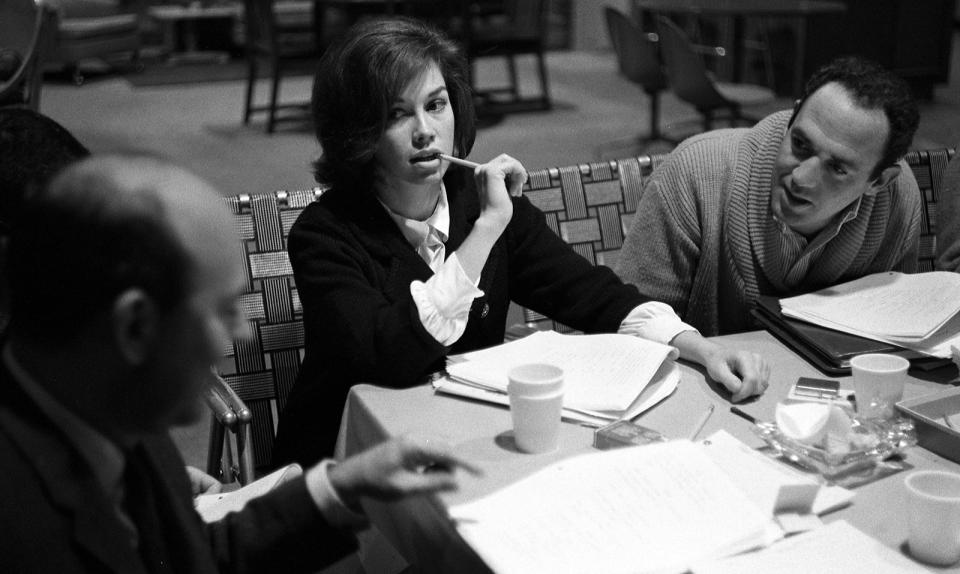
Before she turned the world on with her smile as Mary Richards, Mary Tyler Moore — born December 29, 1936 in Brooklyn, New York — was known as "Happy Hotpoint," a dancing elf in TV commercials for Hotpoint appliances that ran during episodes of the sitcom The Adventures of Ozzie and Harriet. After doing 39 of those, her legs made frequent appearances on the 1957 to 1960 series Richard Diamond, Private Detective on which she played the title character's unseen secretary. Although she made other guest appearances, Danny Thomas, producer of The Dick Van Dyke Show, remembered her as "the girl with three names" when she auditioned to play his older daughter on The Danny Thomas Show.
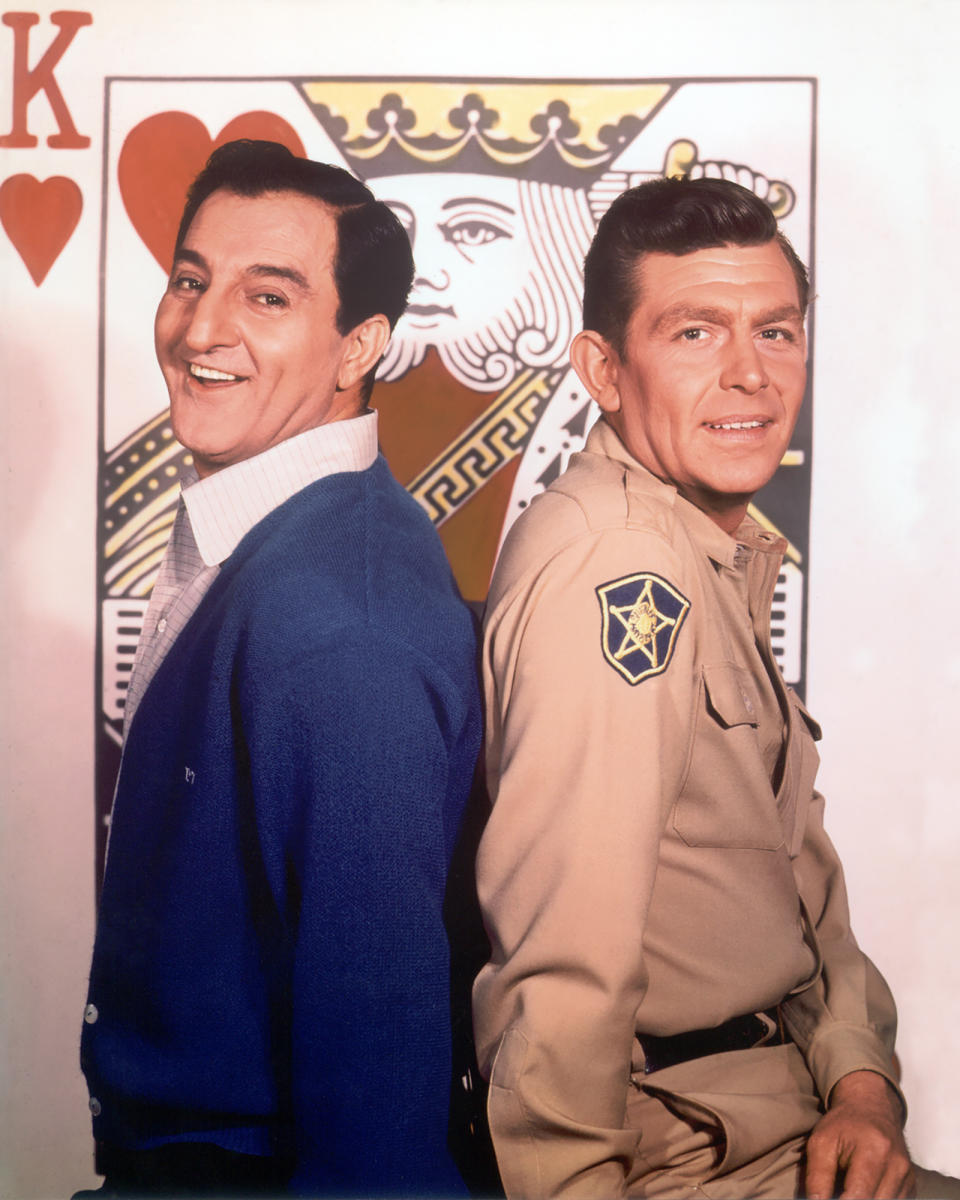
Laughs Geoffrey, "Supposedly Danny's reaction to her was positive, but he asked, 'Who's going to believe a guy with a nose like this spawned a girl with a nose like that?' But she was already known to Danny and Sheldon Leonard, and when they were having trouble casting the part, she was brought in as a possibility. Mary didn't think much of it; she thought, 'I'll make some money and guy some new drapes.' She also had a young son at home and wasn't really thinking about working full time. But she was hired and they lucked out that there was a sexual attraction between Dick and Mary."
Morey Amsterdam as Buddy Sorrell was playing himself
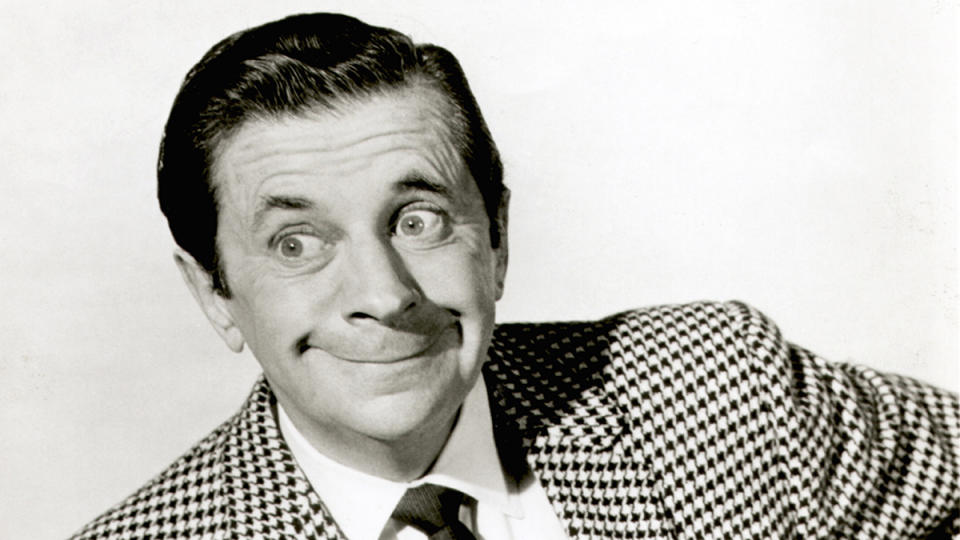
GAB Archive/Redferns
Born December 14, 1908, Morey Amsterdam came to The Dick Van Dyke Show from a career that included performances in vaudeville, earning the nickname "The Human Joke Machine" for his ability to come up with a joke on virtually anything, He hosted a radio show on CBS in the late 1940s, and in 1950 he hosted the first late-night comedy-variety show, Broadway Open House, on NBC.
"Morey Amsterdam was pretty much playing Morey Amsterdam," Geoffrey points out. "Buddy Sorrell was not written that way originally, but when they cast him, he had been a comedy writer and a host and a songwriter. That's what Buddy became on the show. Again, backstory: they talk about Buddy having had worked for Milton Berle and having his own clever but lousy TV show during the early days of live TV."
Rose Marie asked, 'What's a Dick Van Dyke?'
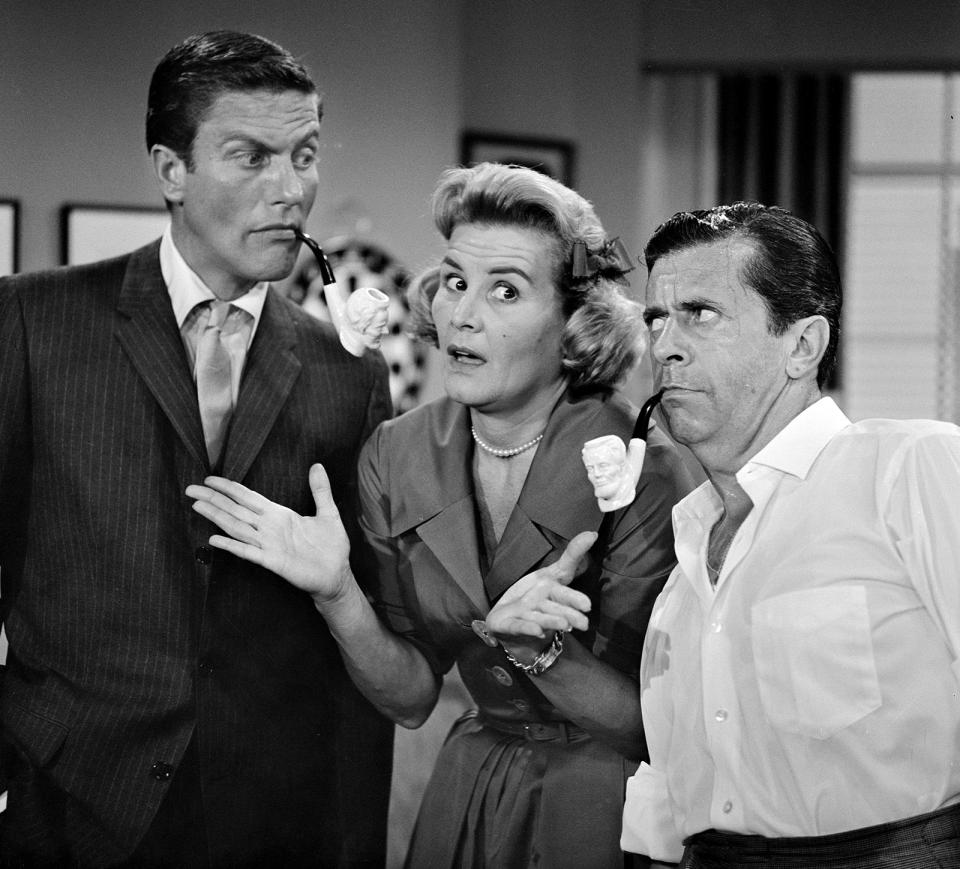
Rose Marie, born August 15, 1923 in New York City, would have a career that spanned over 90 years, taking her from child performer to a star of vaudeville, radio, film, theater, night clubs, records and, of course, television. "Rose Marie was the first person cast other than Dick," Geoffrey points out.
"Her famous retort when she was told she was wanted for The Dick Van Dyke Show, was, 'What's a Dick Van Dyke?' Dick, of course, had been starring on Broadway in Bye Bye Birdie, so Rosie must have known who he was, but her quip was more about, 'Why is this guy getting his own television show? Why is it called The Dick Van Dyke Show?' But she enjoyed the work and greatly respected Dick, who always gave Rosie credit for comic timing taught on the set. Reactions and double-takes that he was able to incorporate into his own bag of tricks. Like I said, he credited her and she said it was true that she would coach him sometimes."
Richard Deacon as Mel Cooley
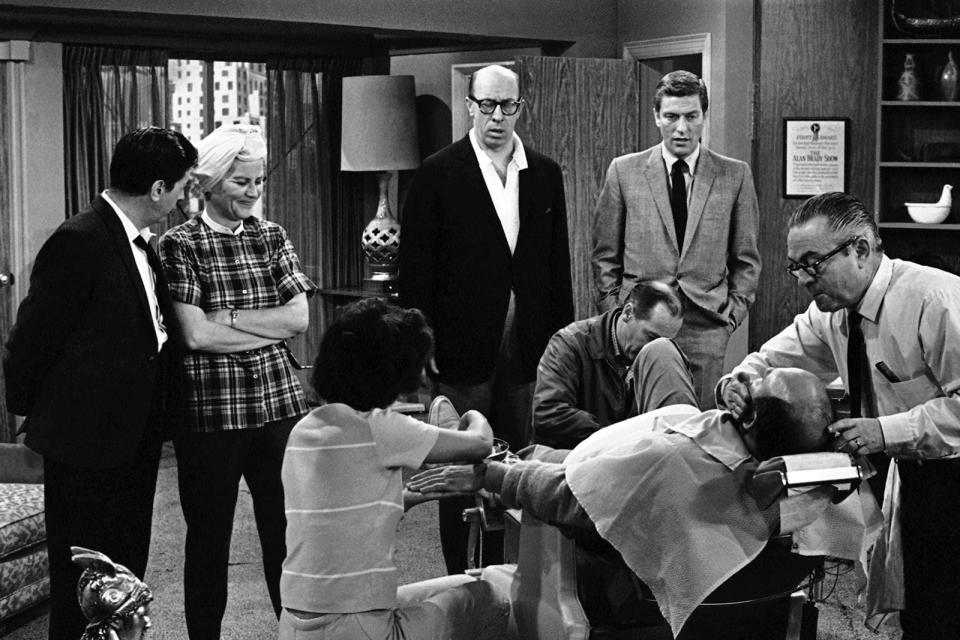
Character actor Richard Deacon, born May 14, 1922 in Philadelphia, Pennsylvania, appeared in many TV shows and movies, but besides The Dick Van Dyke Show, he was seen in recurring roles on The Jack Benny Program and Leave It to Beaver. "Mel Cooley was a parody of every in-law or relative who worked on shows who didn't really have any talent, but the star or someone on the show needed to hire them to give them a reason to have a salary," says Geoffrey. "The way Carl fleshed him out, and Richard Deacon played him, Mel was a pest, but by being a pest he was being a good producer. He was there because Alan Brady knew he could count on Mel to save every penny."
Ann Morgan Guilbert and Jerry Paris as Millie and Jerry Helper
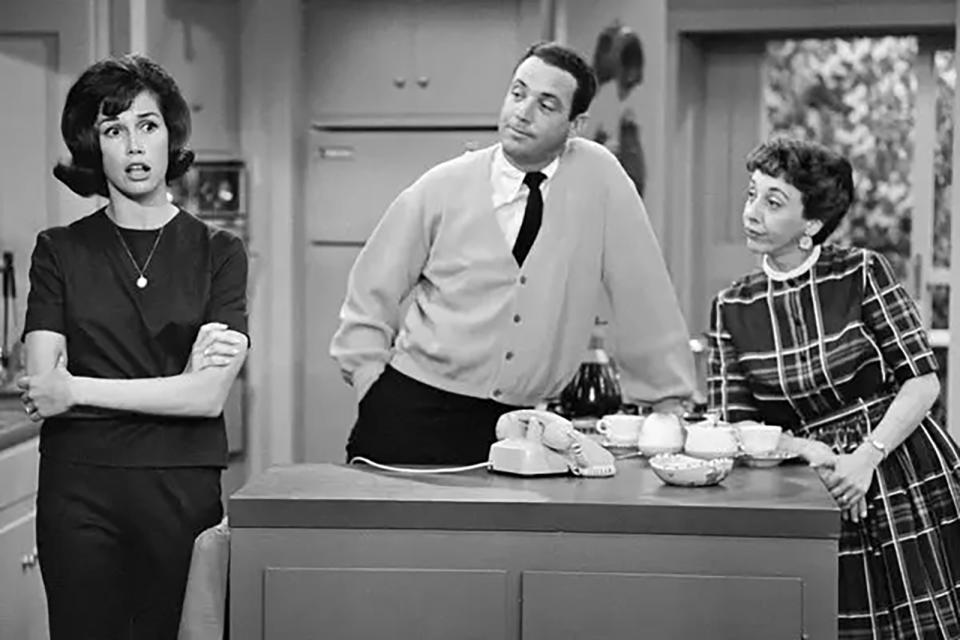
The Petries' best friends were next door neighbors Millie and Jerry Helper as portrayed respectively by Ann Morgan Guilbert and Jerry Paris, the latter of whom would go on to a very successful career directing television (especially on much of Happy Days).
"Millie and Jerry were an early 1960s suburban version of Fred and Ethel or every other radio and TV sitcom where the next door neighbors are a couple who are not as attractive, as smart or as successful and financially independent as the lead characters are," Geoffrey states. "Again, you've got Ann Guilbert from Broadway, live variety shows in Los Angeles — I mean in theaters, not television. Jerry had been on The Untouchables, so he was already an established actor and there was no thinking of his being a director yet, but that was coming."
Carl Reiner's Alan Brady Was Based on Real People
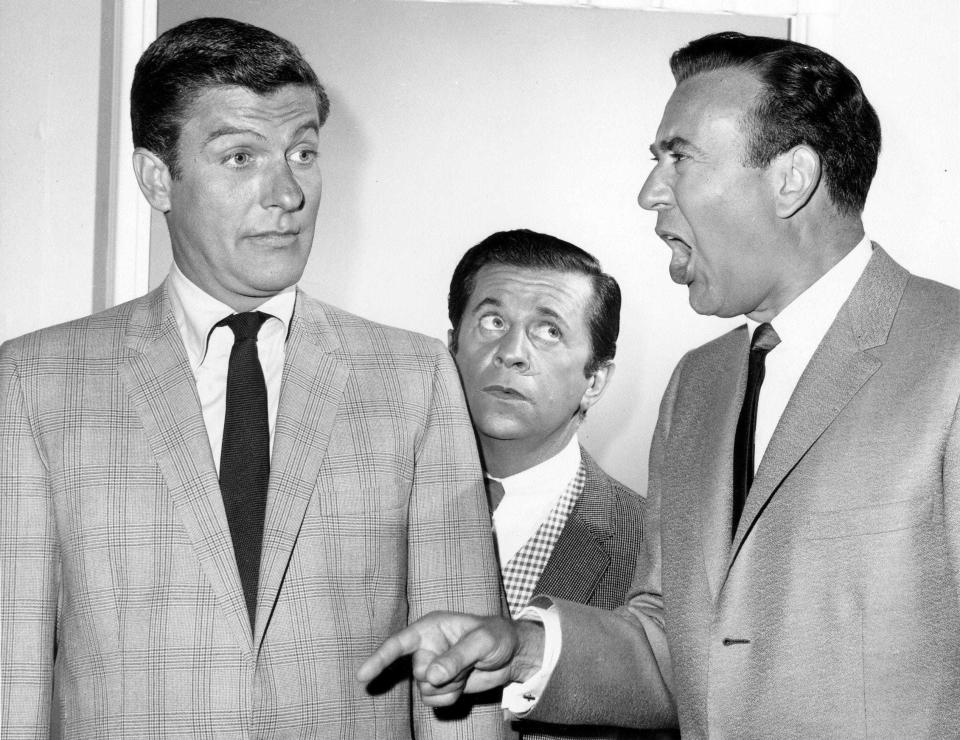
"Carl Reiner himself was a brilliant writer for this show," opines Geoffrey. "In the beginning, his playing Alan Brady was only a voice thing in order to save money. He didn't come on screen until later in the series, and you can see that Carl is playing an amalgam of Sid Caesar from Your Show of Shows, Milton Berle, George Gobel and the variety show hosts who had a little bit of an ego problem in the '50s."
The Arrival of Mary Tayler Moore Split the Focus of The Dick Van Dyke Show
As originally conceived, The Dick Van Dyke Show was designed to be mostly a workplace comedy with a peek into Rob Petrie's home life. "Mary used her amazing charms on Danny Thomas and Sheldon Leonard to secure herself a place on the show, but it wasn't until Carl wrote the episode 'My Blonde Haired Brunette,' where Laura thinks Rob is not interested in her anymore and Millie talks her into bleaching her hair blonde," explains Geoffrey.
"I'll say this, because Carl has said this: Mary had a sense of humor, but having a sense of humor and being a comedian on a sitcom are two very different things. Mary steals the episode because of her crying to Rob about why she did it and how she felt.
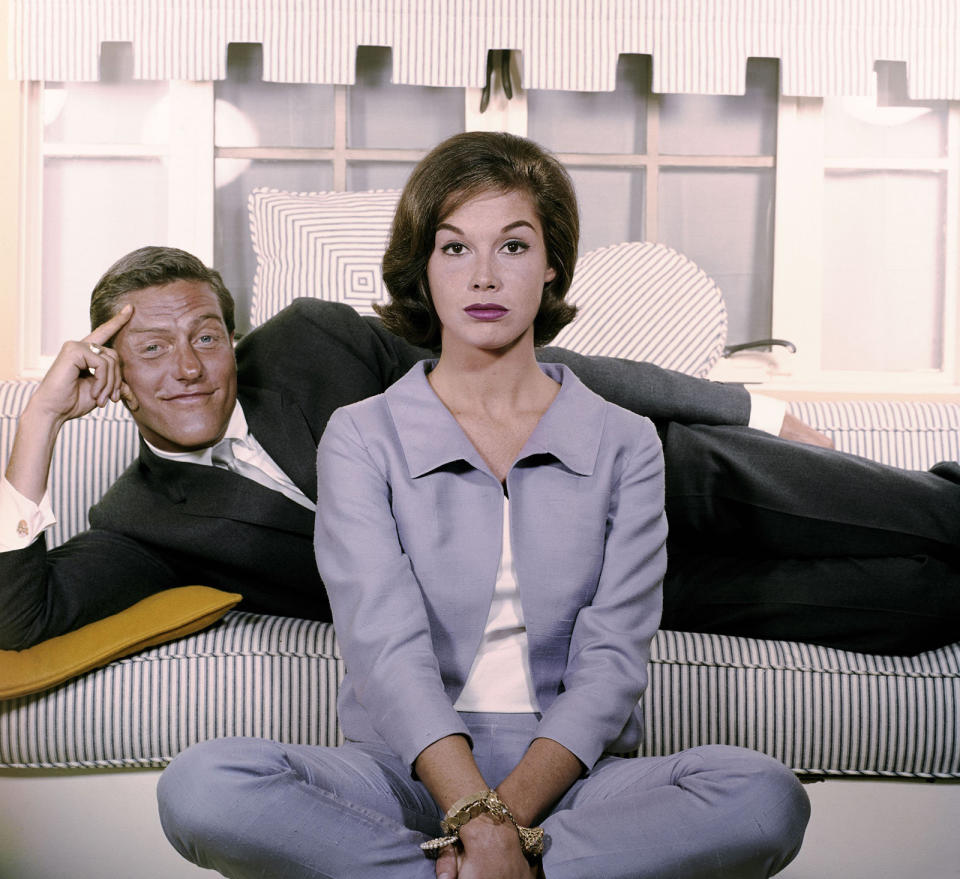
"The crying," Geoffrey continues, "was a combination of Lucy Ricardo and Nanette Fabray and, in fact, a lot of Mary Richards on that show was her playing Nanette Fabray and, in fact, Nanette played her mother on The Mary Tyler Moore Show. But it was Carl that gave her that performance with director John Rich's help."
"The audience screamed so much that they moved that episode to almost the beginning of the season, and that's when the problems began, because that's when it really switched to at least as much time at home without the other characters in the show. There were more episodes with Millie and Jerry, more episodes about Rob's home life and entire episodes where Buddy and Sally don't even appear. That got Rose Marie angry, because she had been told that she would be the female lead of the show."
The Reason 'The Dick Van Dyke Show' Came to An End
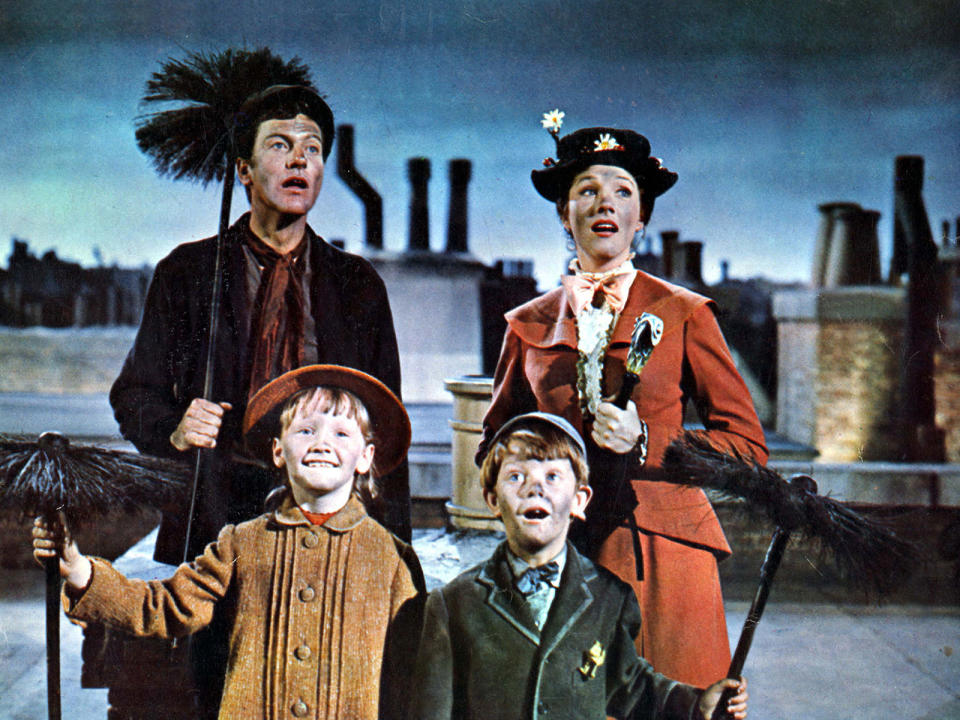
There were a number of factors involved with the decision to end The Dick Van Dyke Show following its fifth season. For starters, its star was scoring on the big screen with movies like What a Way to Go! and Mary Poppins in 1964 and he was itching for a change. Mary Tyler Moore was looking to move on as well. And then there were the basic economics of the show, which had been broadcast in black and white throughout its run whereas most other shows had already begun airing in color.
"Petticoat Junction went into color, The Lucy Show went into color, Gomer Pyle went into color," says Geoffrey. "And when a show went into color in those days, the set had to be redecorated, the clothing had to be remade for the colors that would look good on TV sets as opposed to what looks good on black and white television. The makeup had to change from the yellow stuff we used to wear on black and white TV to movie makeup for color. There's a cost increase in all of that. And, of course, almost all actors' contracts have a pay increase built in each year. So it was a combination of Dick and Carl wanting to make movies, and Mary wanting to go to Broadway, where, unfortunately, she flopped; and the costs of going on."
Why 'The Dick Van Dyke Show' Endures
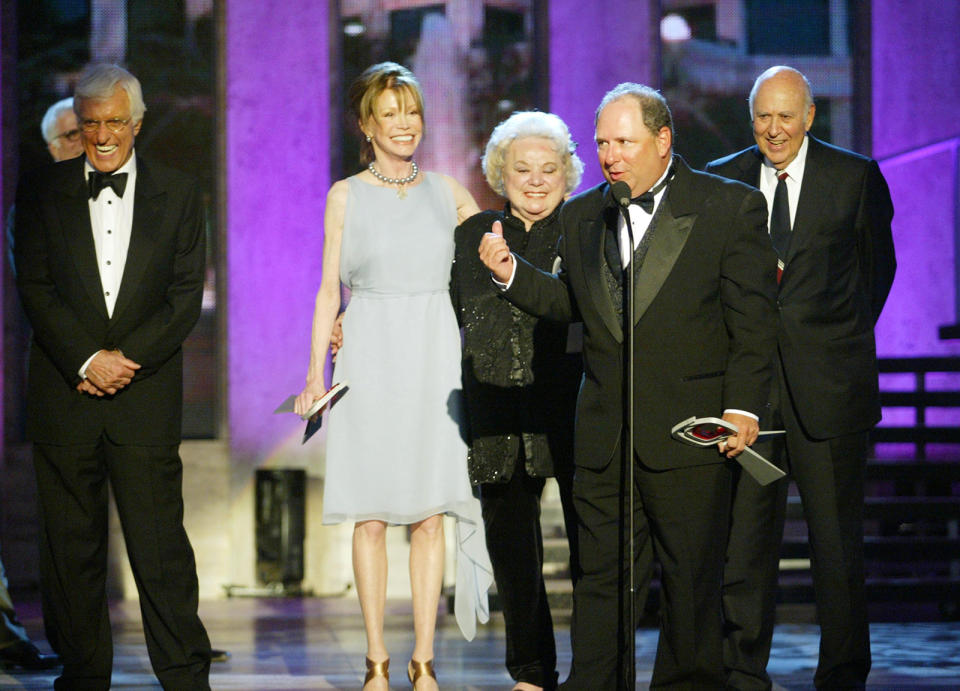
It's been nearly 60 years since The Dick Van Dyke Show finished its run, but Rob, Laura, Buddy, Sally, Alan and the rest remain beloved by television viewers, the series even having its own channel on the Pluto TV streaming network.
"The show was brilliantly written and directed, with a cast that could do standup comedy and sing and dance, which greatly enhanced the entertainment value of the episodes," Geoffrey closes. "So not only do you have great writing, but you've got Morey and Dick doing standup within the show, you've got Rosie and Mary singing and dancing. You've got Dick singing and dancing. What I Love Lucy was to the '50s, The Dick Van Dyke Show was to the '60s."

